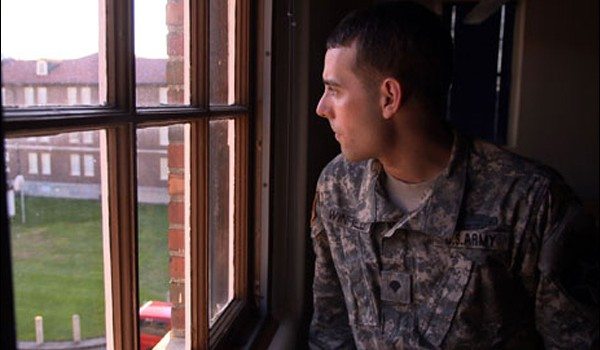
 In 2010, a platoon of US army soldiers, known as “The Kill Team”, murdered three innocent Afghan civilians in an act of “sport” in the Maywand District of Afghanistan. This deeply disturbing and revealing documentary plunges audiences into the heart of this tragedy, interviewing those who participated as well as those who tried to seek justice for these heinous acts. A major focus in the film is on the events leading up to the trial of Private Adam Winfield, a 21-year old soldier in the platoon who witnessed the atrocities committed by his comrades and who tried reporting it. He faces trial for manslaughter, which carries out a maximum sentence of eight years, despite being one of the only members in his platoon who attempted to stop the murders.
In 2010, a platoon of US army soldiers, known as “The Kill Team”, murdered three innocent Afghan civilians in an act of “sport” in the Maywand District of Afghanistan. This deeply disturbing and revealing documentary plunges audiences into the heart of this tragedy, interviewing those who participated as well as those who tried to seek justice for these heinous acts. A major focus in the film is on the events leading up to the trial of Private Adam Winfield, a 21-year old soldier in the platoon who witnessed the atrocities committed by his comrades and who tried reporting it. He faces trial for manslaughter, which carries out a maximum sentence of eight years, despite being one of the only members in his platoon who attempted to stop the murders.
Filmmaker Dan Krauss does not offer a subjective interpretation of the events that took place, only offering the accounts of what happened; audiences are left deciding for themselves what to make of the story. What Krauss does depict, through the accounts of the soldiers, is the psychological damage and desensitization to violence that becomes a natural resultant of prolonged war. For these men, their desensitization goes horrifically further. In one account, given by Captain Jeremy Mordock, finger bones were collected from dead bodies as “souvenirs”, or war trophies. Leading ring man of the “Kill Team”, staff sergeant Calvin Gibbs, would take the fingers off the corpses and put them into zip lock bags, waiting for the flesh to rot off before turning them into necklaces. Morlock explains how nobody in the platoon believed this to be abnormal since Gibbs was just “doing his thing”; he was the man with the rank, who were they to question him? In another disturbing account, a soldier describes how platoon members were not “made men” until they killed somebody. Due to the peer pressure, many would approach Sgt. Gibbs to help them get “made”; this would be done by setting up kills on random civilians in the village and planting weapons on the bodies to make it appear like it was self-defense.
It is truly harrowing not just to hear the repulsive actions committed by these soldiers, but how normal some of these men appear on camera, how much they appear like every-day Americans you’d see going to work or school. Were these men sociopaths or simply victims of circumstance, slowly and subconsciously coerced into barbarism by the men who were supposed to be their mentors? How far should a man endanger himself for the sake of doing the right thing? Through the accounts of Adam Winfield, it becomes clear that sometimes, the answer is always much easier said then done. When surrounded by monsters, it may be hard not to become one yourself.